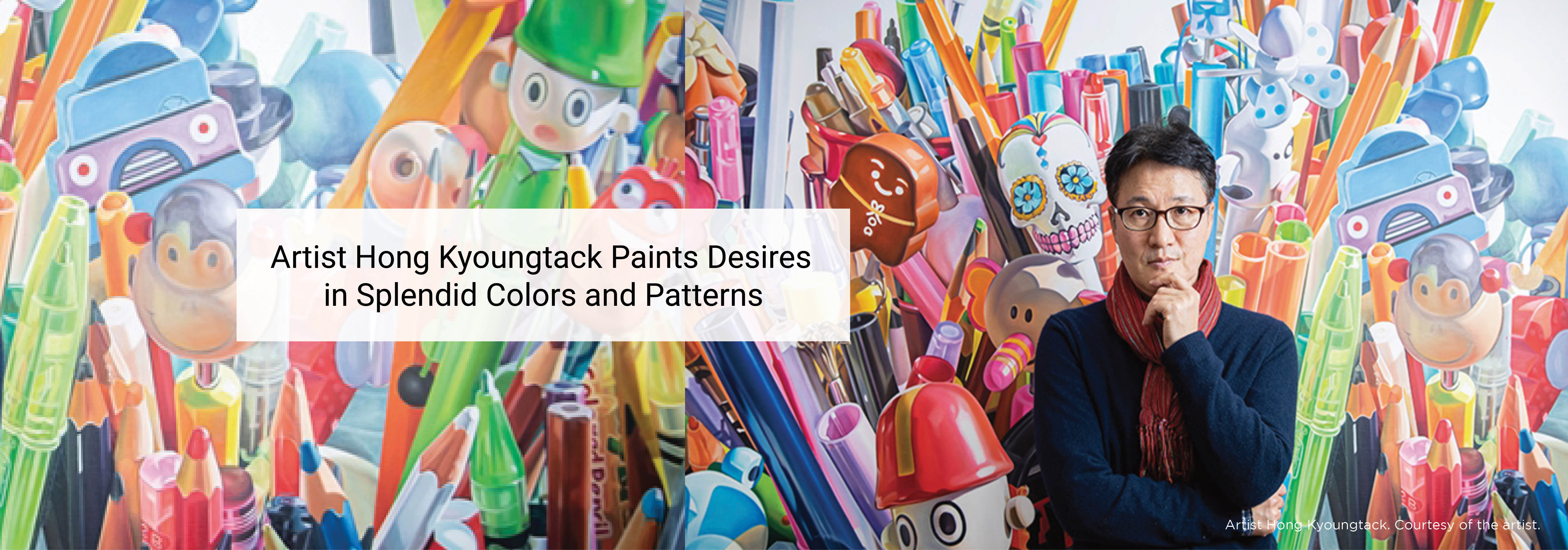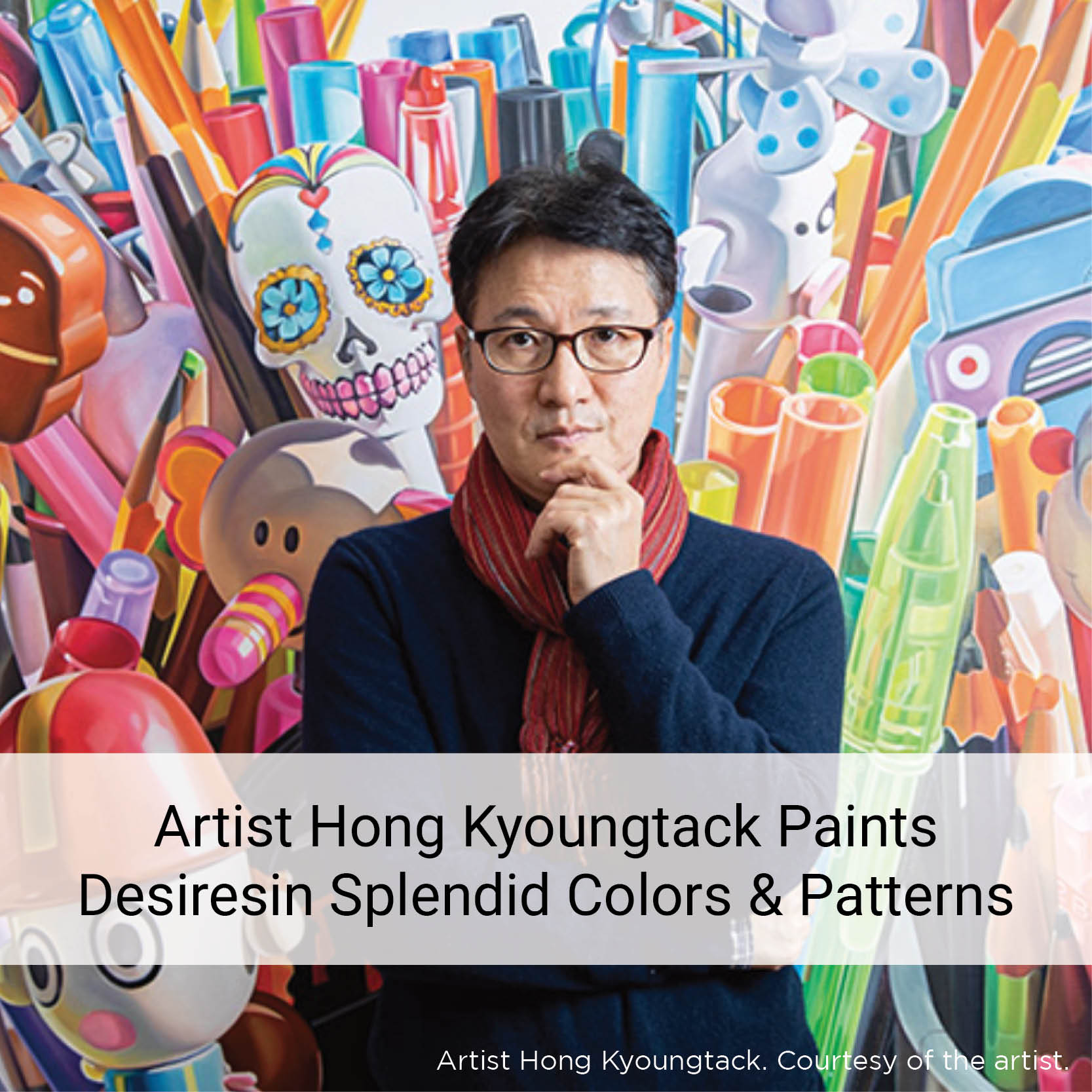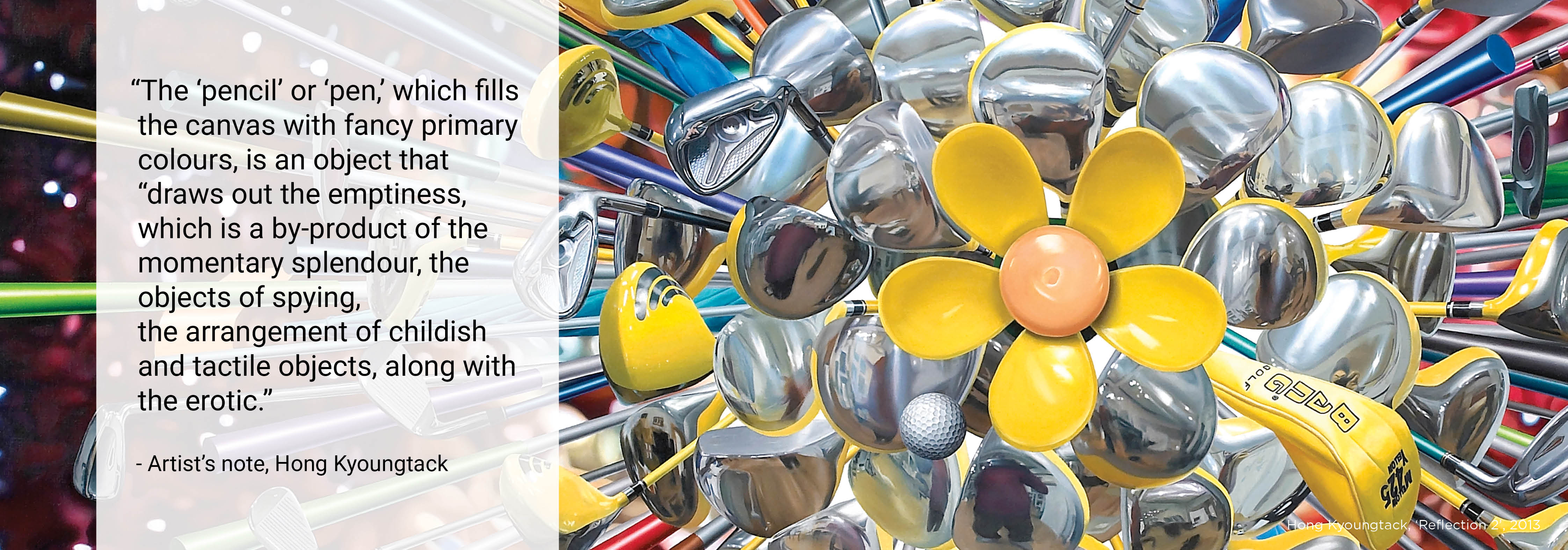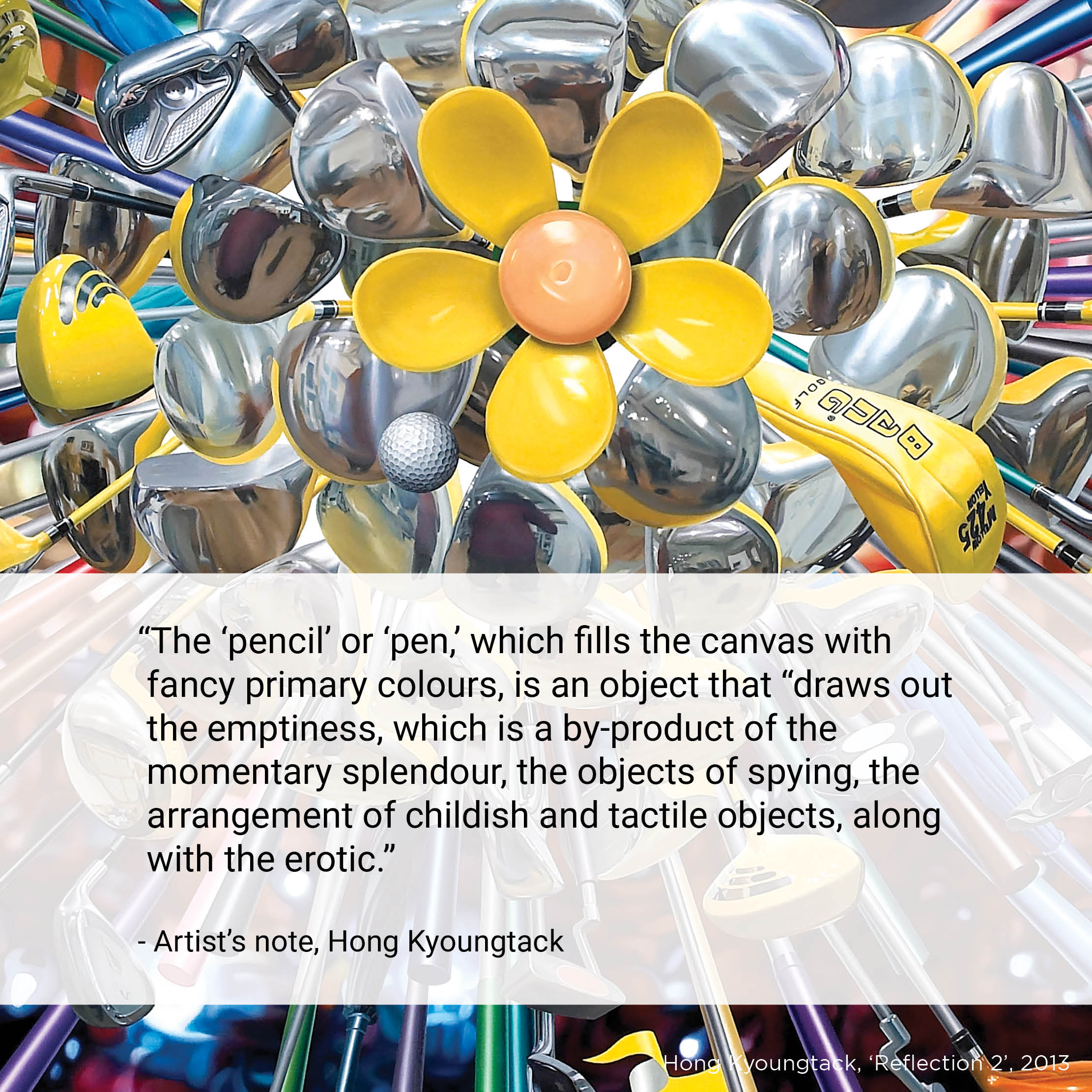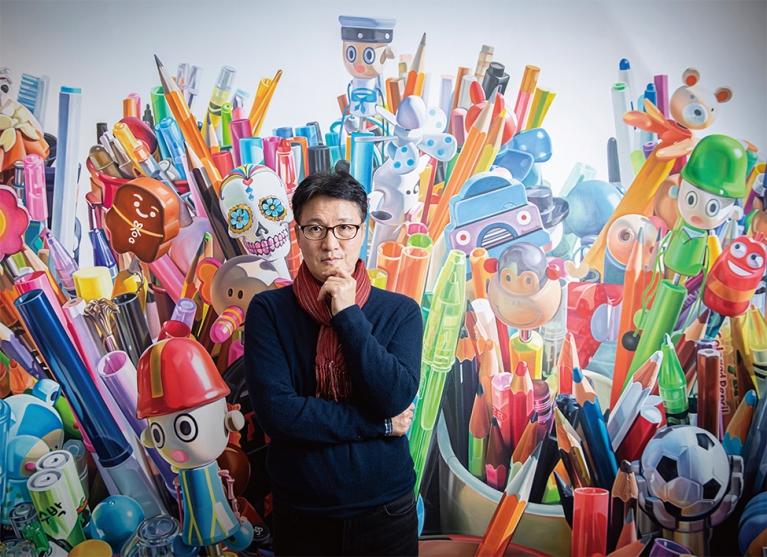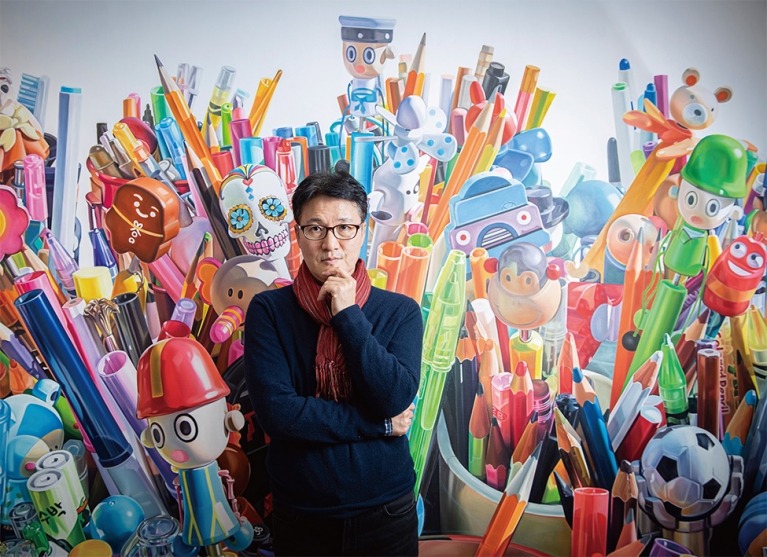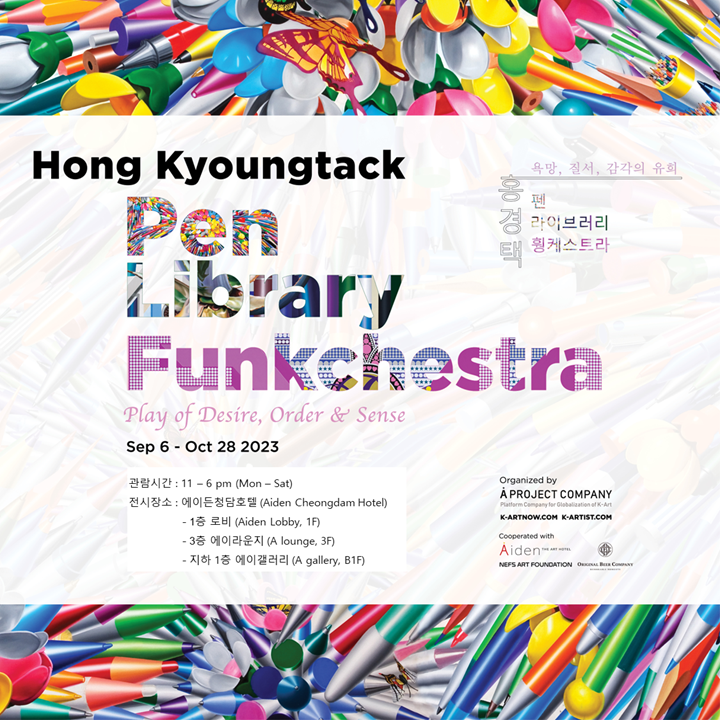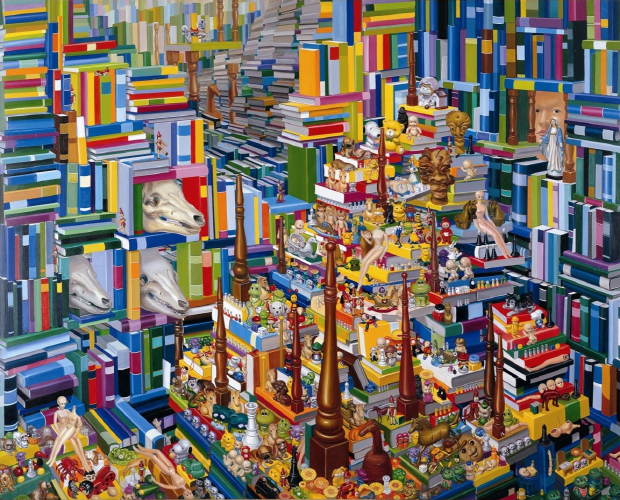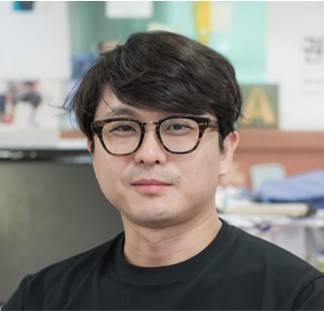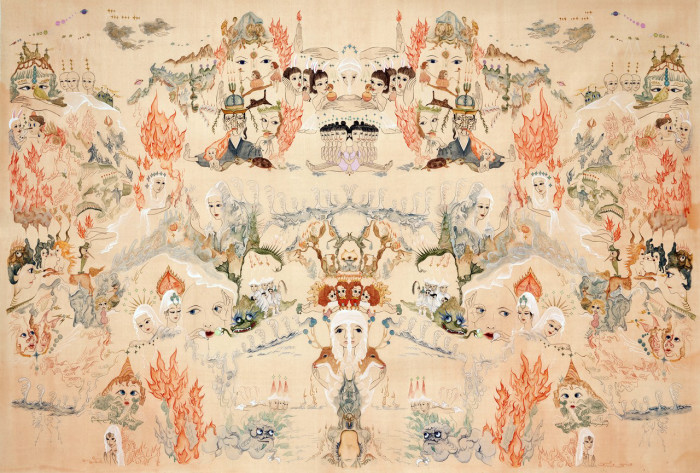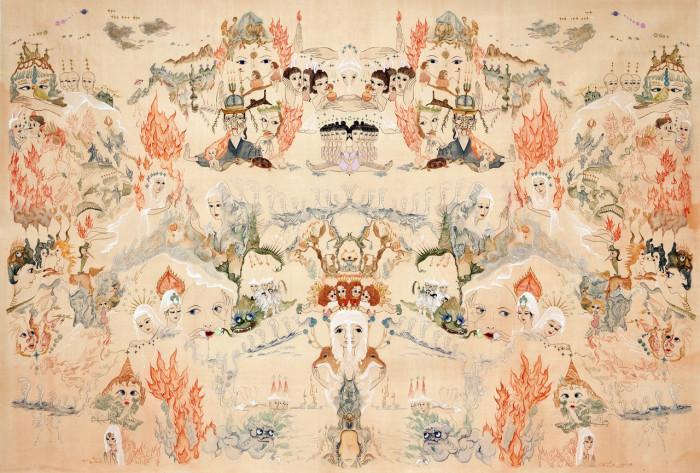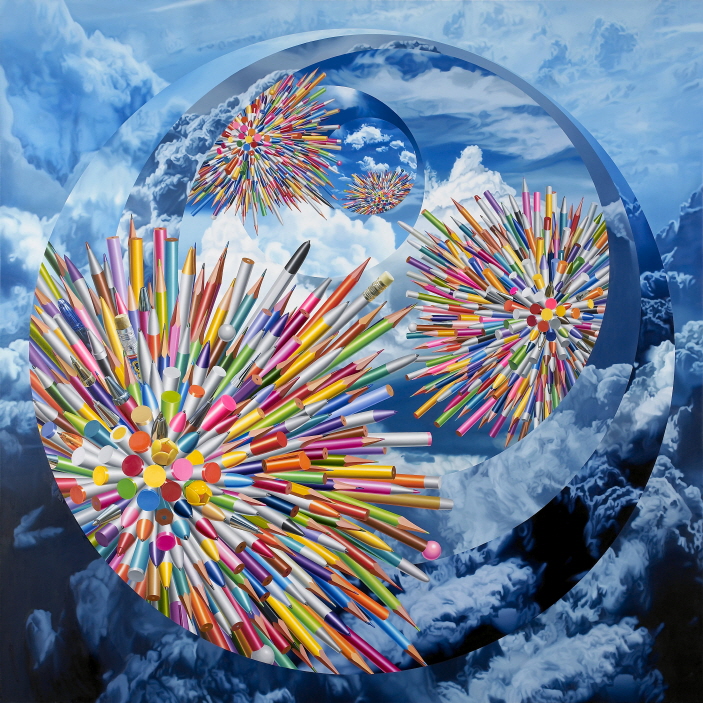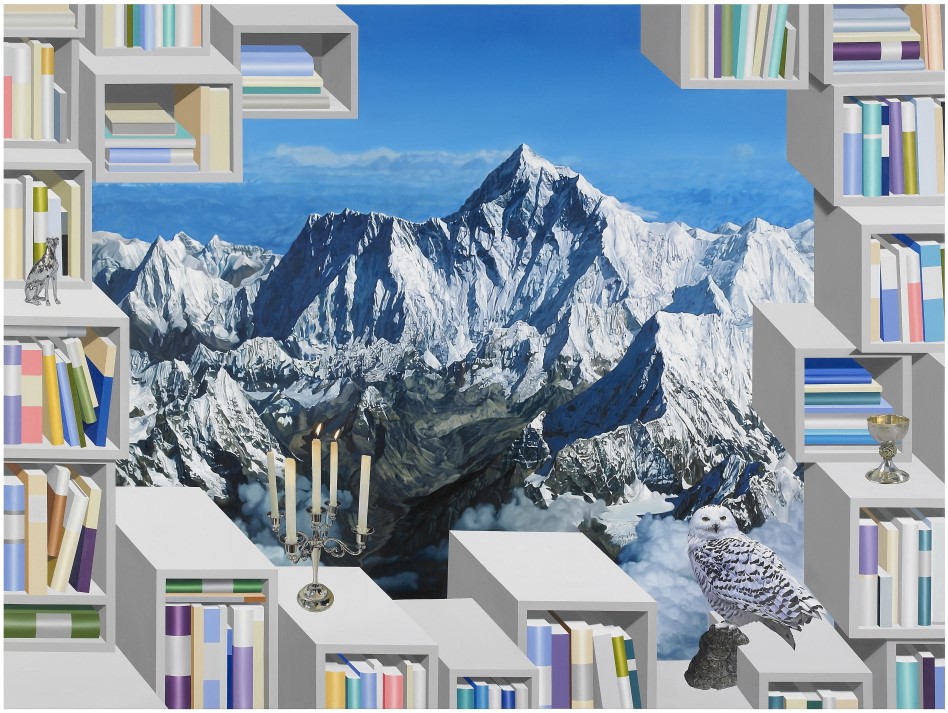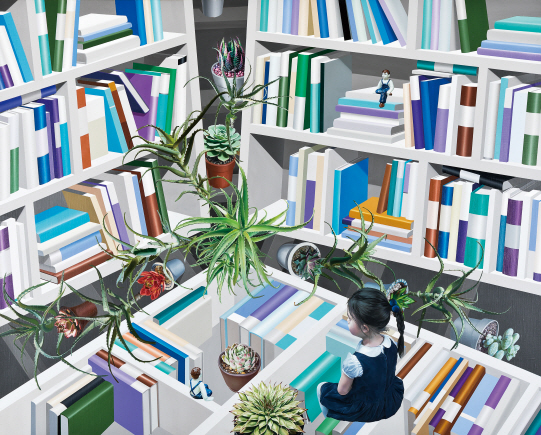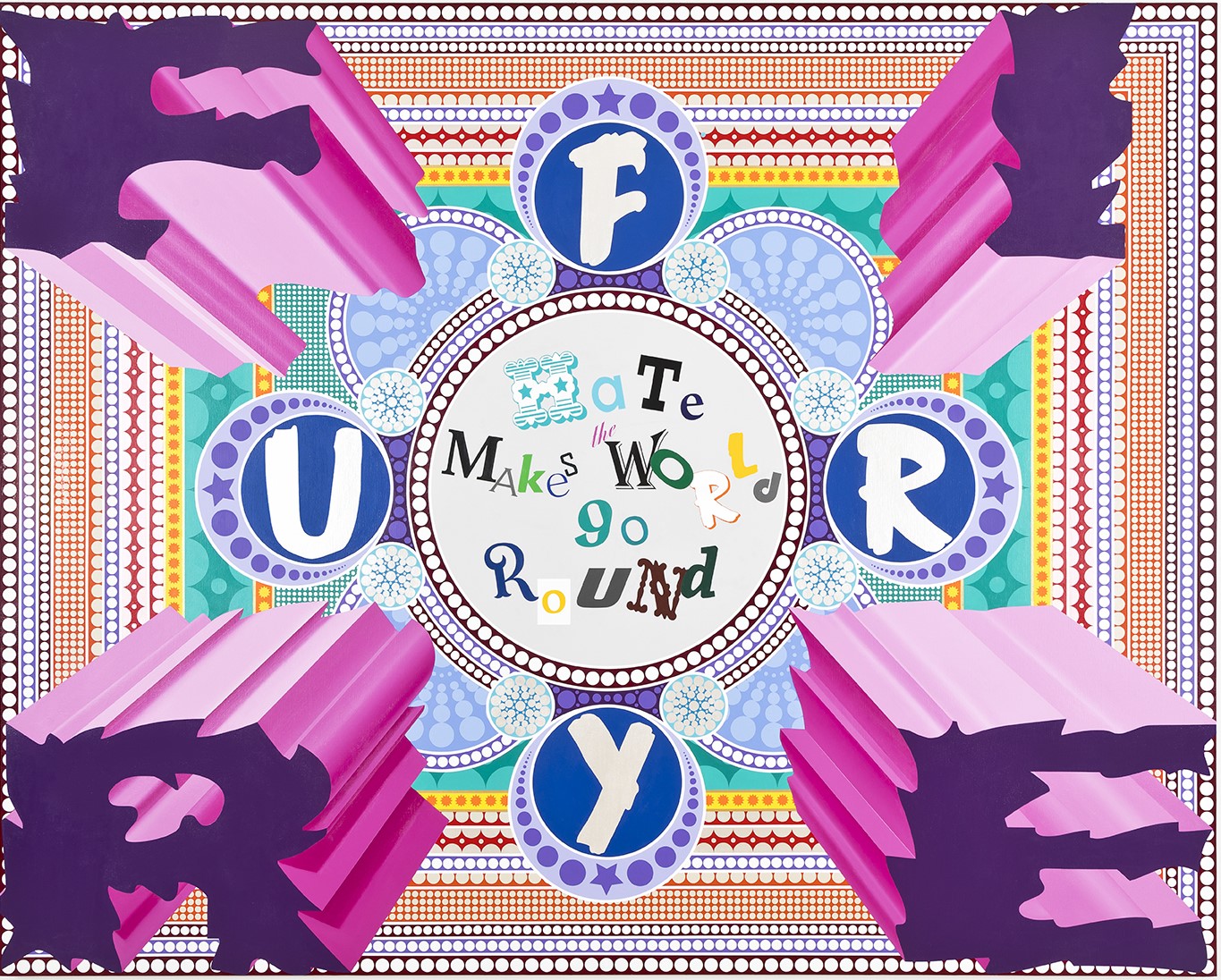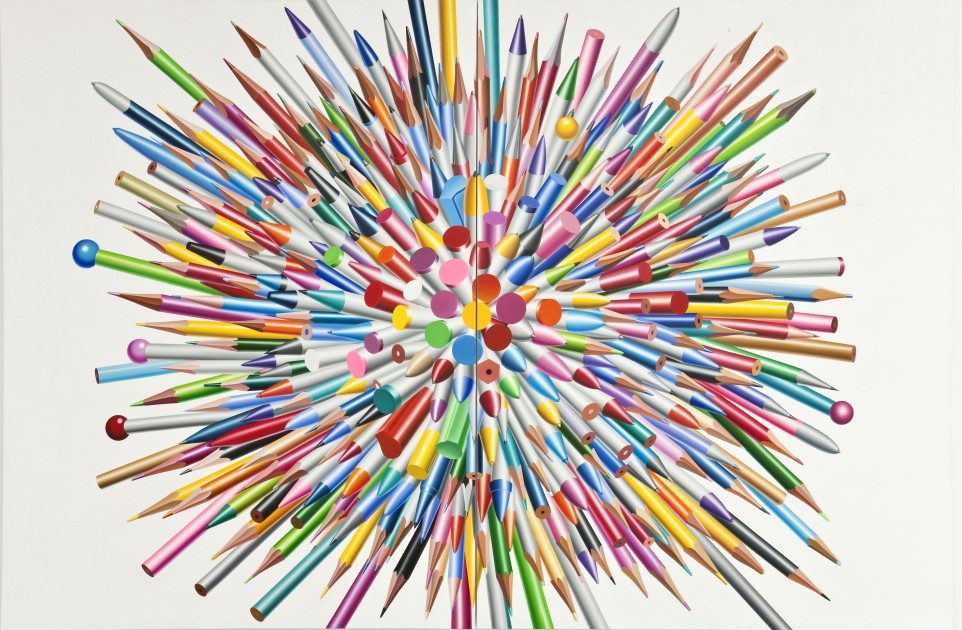Hong Kyoung-tack is an artist who presented a new milestone of contemporary still life painting. He opens our eyes to realize that still life painting is not about painting of objects literally still but about painting full of images emitting intense energy like fireworks. The exhibition of Indang Museum teaches us why he could break the record of the highest price in no less than two occasions in Hong Kong Auction, being an artist of his forties.
When Hong Kyoung-tack was at college, he was amazed at Minhwa or folk painting. How can the painting of the Joseon period be this modern? In the painting, there were Matisse, Mondrian and even Léger. Shocked, he decided to commit himself to the work of modernizing Minhwa. He chose this path also because he found modern and contemporary arts extremely heavy. Minhwa is considered pop art of the Joseon period. Pop art directly reflects tastes and life of modern-day people and is characterized by light and splendorous expressions. Regarding the charm of “Chaekgeori” of Minhwa, he mentions as follows: “During the Joseon period, painting was not really generous about colors. There must have been few works painted in color. In this context, Minhwa allows people to enjoy colors in painting. Moreover, there are not many painting focused on objects back then, but Chaekgeori painting expresses earthly desires of objects. Today’s trends share with the past time painting in common in terms of earthly and mundane traits. There is a close affinity between me and Minhwa artists in the sense we draw fancy objects we cherish.”
He loves Minhwa and Chaekgeori for some clear reasons. He is simply by colors and objects appeared in Chaekgeori. This strong empathy is created in the sense that Chaekgeori belongs to colored painting and still life people can approach. In the beginning, he paid attention to decorative and structural beauty of Chaekgeori. Observing Chaekgeori of Minhwa, we can notice that there are diverse cubist perspectives beyond only one-sided vision. It is composed of an object viewed from multiple perspectives. The structural system of Chaekgeori is highly modern as well. There are some Chaekgeori reminding us of color-field abstract painting of the West. The works he started to paint were “Still life” series highlighting structural aesthetics of Chaekgeori.
In particular, the work receiving the greatest attention among the serial works is splendorous library series created from 1995 to 2005. He reinterpreted the initial Chaekgeori that was realistic and structured through a variety of colorful spectrum like the color chart. To the library series started with material painting, he added some spiritual colors. He brought the myth of creation to the interiority of library and reflected this dichotomous thinking of civilization vs non-civilization. This work started as he was attracted to the structural beauty of Chaekgeori, but his library finally transformed into the notional and philosophical dimension.
One day, Hong had a chance to appreciate “The Tower of Babel” of Pieter Bruegel at a museum in Japan. With this awe-inspiring impression, he saw the images of the Tower of Babel from books of library. The Tower of Babel symbolizes how humanity has overcome adversity in the harsh environment until today. On the other hand, when human arrogance invaded the territory of God, the disaster of destruction of the Tower of Babel occurred. As a lesson not to repeat the same error of arrogance, the Tower of Babel stands tall in our heart. It is awe of God and compassion for humanity.
The image of library painting produces intense and attractive energy. It is amazing to see how he could imagine the image of explosive energy from still life of books and articles. However, Hong Kyoung-tack sought the source of energy coming from the colorful books from the consciousness of “original sin.” From the stacks of colorfully shining books, Adam and Eve show up. Ever since they were expelled from the paradise, humanity has been constantly accumulating legacy of a great deal of culture and science to survive with autonomy. Being the Tower of Babel of books completed this way, the directly-opposed message of accumulation of civilization and border of arrogance crashes each other in a subtle manner. Hong expresses two important discourses establishing cultural assets of humanity.
The colorful library suddenly transformed into an elegant one with white tones. This means that notional Chaekgeori turned into realistic one again. His personality prioritizing changes quickened the birth of a new library. Though this library is given colors, comparing to the previous colorful library, it looks like an ink-and-wash painting in a way. In the new library, noticeably many cacti are observed. Cacti grow in a dry area. They do not have leaves but thorns. Hong paid attention to strong vital power of cacti that are able to survive despite harsh processes. Hong identified cacti with books, which is concentration of civilization, record of humanity and unforgiving history.
Experiment of library continued again. In 2011, he visited a bookstore of the rich town on the eastern part of Manhattan. This experience evoked him new inspiration. The stacks of books in the old bookstore contributed to bringing deep emotion and inspiration of a new library. Though he placed his preferred icons such as photography-like realistic landscapes, pigeons, Lingzhi mushrooms, skulls and owls at every corner of the painting, they failed to play a role as nothing but hair accessories decorating reality. This work shows that his talent lies in expressionism and not in realism. What we expect from Hong Kyoung-tack is this intense expressivity. He always carries “image bombs” in his heart everywhere. His bombs are full of visual impact, vibration of splendorous colors and dynamic movement. This is in line with tastes of modern-day people who always seek something stimulating. However, when you talk with him in person, you will soon realize that he is surprisingly quiet and introverted. You might be wondering how a person with this personality can paint this powerfully, but the secret is in tremendous efforts and labor. In his Library Series, there is a work of which the creation period covers from 1995 to 2001. This means that he was working on it for no less than 6 years. Filling the canvas with as many books as possible, he repeatedly added colors to these books. This ceaseless elaboration has magical power of moving hearts of people appreciating his work.
Pencil Series exploding like fireworks are as popular as Library Series. Hundreds of pencils intensely explode with radiation force. Interestingly, Pencil Series were directly inspired by Chaekgeori of Minhwa. Hong created Pencil Series along with Library Series in parallel. He was drawing pencils put in the pencil case and suddenly he invited only pencils on the canvas. This is how he started this painting. The calm stationery put in the pencil case inside Chaekgeori abruptly changed into an eye-captivating image bomb. Like a Disney fairy, he just practiced magic giving vital power to dormant stationery. Hong Kyoung-tack is an artist, who successfully pulled out potentials of Minhwa, folk painting of the Joseon period to the level of modernity in a full manner.



